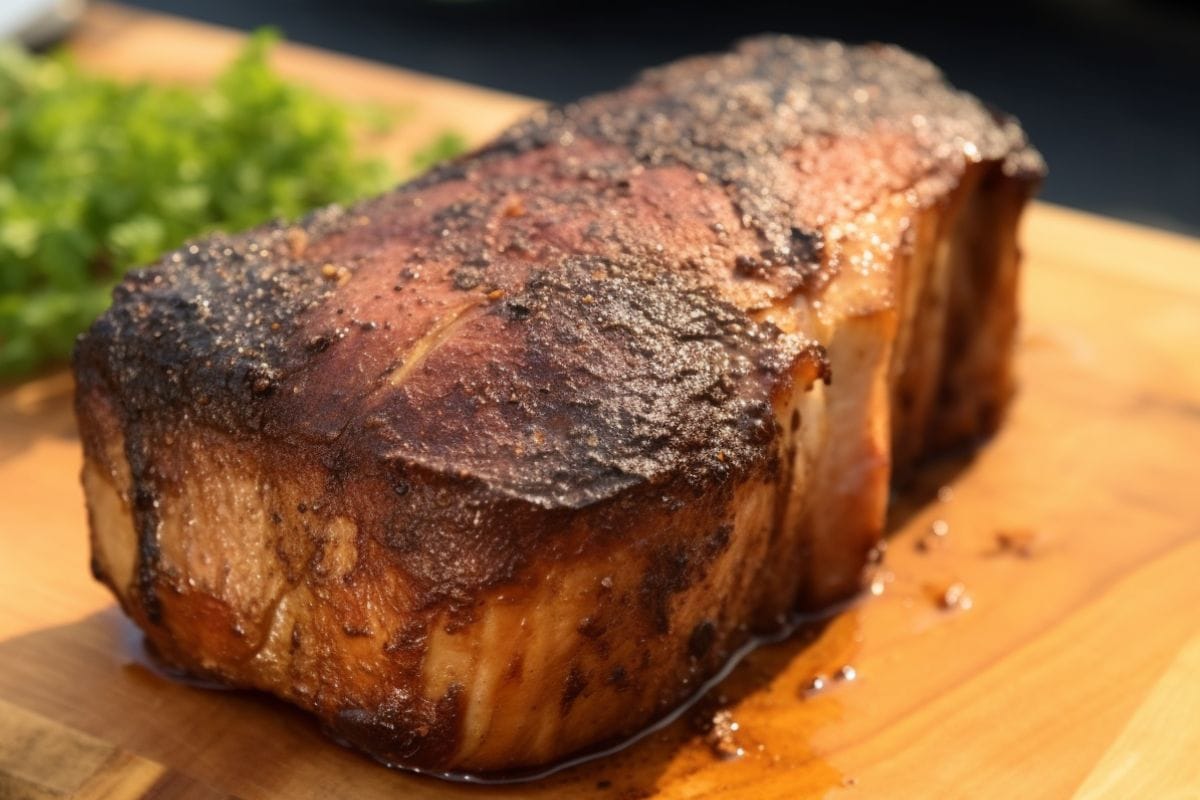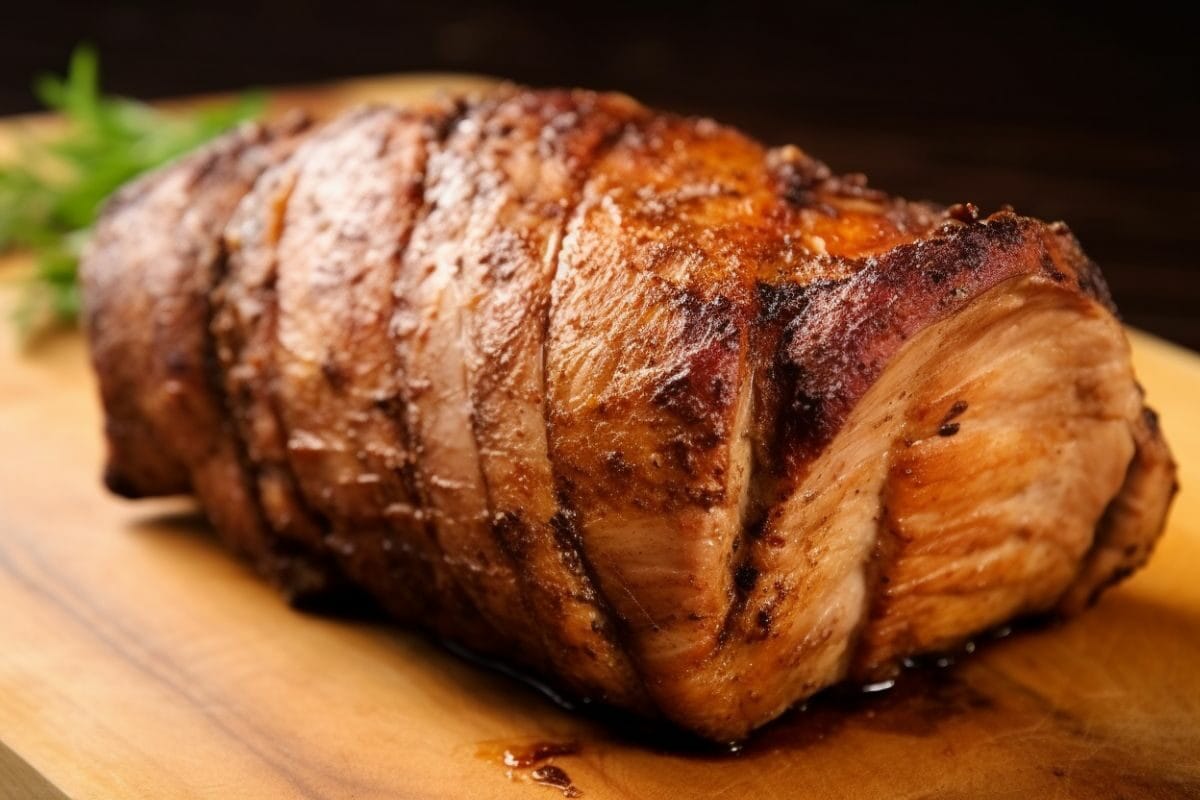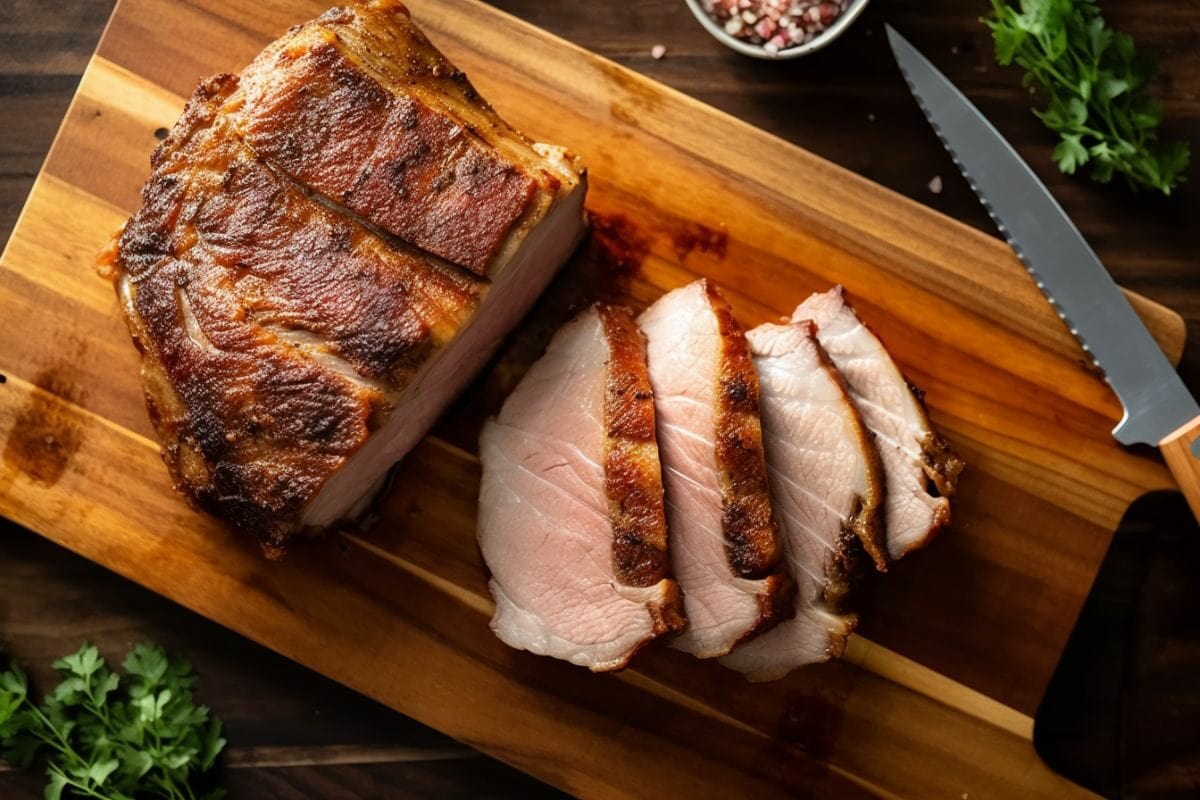The USDA recommends resting pork for at least 3 minutes before carving. That said, any pitmaster worth their name will tell you that larger cuts of meat like pork butt and pork shoulder, also called picnic shoulder, should be rested for 20-30 minutes.
In my four years working as a rookie chef, I have always been directed to carve pork shoulder and pork butt after resting. The one time I carved pork butt that was not rested, I was surprised by all the juices that trickled onto my chopping board.
Needless to say, my pork butt roast ended up too dry and tough for pulled pork and lacking in flavor.
I put this article together to explain how and why to let pork butt rest. I have shared some tried and tested techniques that you should try, as well as answered some of your most pressing questions on resting both pork butt and pork shoulder.

There are two important reasons why you should let large cuts of meat rest.
Carryover cooking refers to the extra time food continues to cook off the heat source. It is more impactful on larger cuts of meat like pork butts and pork shoulder that require longer cooking times.
These cuts have a higher heat capacity. This means that they are capable of absorbing and preserving a lot of heat during the cooking process. This heat continues cooking the pork even after you take it off the smoker.
This is one of the major reasons why seasoned pitmasters advise taking your meat off the grill or smoker when the internal temperature gets to 5°F-7°F less than your target temperature: to account for carryover cooking.
When meat is subjected to heat, the protein fibers become firmer and shorter, wringing out their moisture content.
Starting at the core, the pork butt will expel its moisture upwards towards the surface of the meat cut.
At between 150°F-170°F, the surface of the meat will get to high temperatures and evaporation will begin. This causes the stall when smoking meat. This is when the meat temperature stops rising. The stall can last for up to seven hours.
When you take the roasted meat from the smoker and cut it right away, all the moisture beneath the surface comes flooding down your cutting board and working surface, along with the flavor from any marinade and brine.
When meat rests, the internal temperature slightly drops. The protein fibers relax and reabsorb a good amount of moisture and flavor all through the meat. This is another important reason why you should let pork butt rest.
Related Reading
Before you give up on your pork butt, consider the following techniques pitmasters use to get past the dreadful stall, also called a plateau.
This involves using foil to wrap the entire pork butt while keeping out as much air as possible.
This wrap will trap heat within, allowing the pork butt to keep cooking.
Place it back on the smoker until the core reaches the safe temperature of 145°F. This will take about four hours to cook.
If wrapping does not work for you, using a water pan helps against the stall by increasing the humidity within the cooking chamber. This will slow down the evaporation of the moisture built up on the meat’s surface.
In turn, the temperature of the core of the meat will have a chance to catch up with the temperature on the outside of the meat cooking it evenly.

When resting your pork butt, you should ensure that the temperatures stay above 140°F. You can rest meat in a cooler or the oven. Here’s how:
Start by wrapping the pork butt tightly in aluminum foil or butcher paper if it is unwrapped.
Grab the smallest dry cooler that can fit your pork butt. A small cooler will ensure less heat is lost to the surrounding air.
Line it with a clean towel large enough to cover the pork butt. Place the meat on the towel and cover it all around the cut. Shut the cooler and let the pork butt rest.
The dry cooler, towel, and foil help to keep the heat circulating in the meat.
You can let the pork butt rest till it reaches 140°F. Any lower and it will be in the danger zone.
If you don’t have a cooler, don’t fret! You can also let the meat rest in the oven.
Take your meat off the grill and unwrap it.
Put the pork butt in an oven-safe dish and place it in a preheated oven. The oven temperature has to stay above 140°F for optimum safety.
This is a great way to rest smoked meat if you want to preserve the delicious crispy bark.
Related Reading
Both sides have convinced advocates but there is no one right way when it comes to grilling. It is more about what works for you.
If you rest your pork butt uncovered, the heat will be distributed around the room and less of it will be left circulating within the meat.
Resting pork butt uncovered will ensure it grows cold quicker.
If you are banking on carryover cooking, tent the pork butt with aluminum foil to conserve the heat and circulate it within the pork butt.
Assuming your meat is already at the target temp you need, tenting may only serve to overcook the meat and ruin your crispy, crunchy bark.
I recommend that you consider your pull temp. If you want to use carryover cooking to your advantage, cut back on the pull temp and rest the pork butt covered. If not, take the pork butt from the smoker at the final temperature you want and rest uncovered to avoid overcooking.
When smoking pork butt, there are certain temps you should be keen on.
The first and most important is USDA’s safe temperature recommendation of 145°F. This was recently reduced from 165°F.
Before you take your pork butt off the grill, you must consider what you want. If you want tender pork for a recipe like pulled pork, let the internal temperature range get to between 195°F-205°F. The meat will be extremely tender and easy to pull.
If you allow a resting period, keep in mind that the meat will keep cooking so lower your pull temp by around 5°F.
Large cuts of meat like pork butts can experience a temperature rise of as much as 10°F when resting. This shows that meat doneness is directly linked to the final internal temperature the cuts get to.
Knowing the pull-temp pork butt out is crucial to the quality of the final dish. Pull temp refers to the temperature at which you will pull your dish from heat. It is sooner than the target temperature.

It is advised that you rest all types of meat for at least 3 minutes for optimum safety and quality.
Typically, even small pieces of meat like pork chops and individual pieces of chicken will experience a temperature rise when resting.
Absolutely. Resting pork shoulder at room temperature for longer than two hours puts it in the danger zone which is highly discouraged.
Related Reading
As I always say, roasting is a learning process built on trial and error till you lock on techniques that work for you. Don’t overthink it, just give it a try. But given the breakdown I have laid out above, I strongly recommend resting pork butt for 20 minutes before carving.